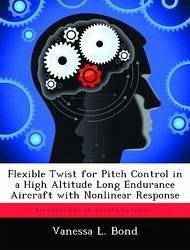The goal was to demonstrate that scaling the nonlinear response of a full-scale finite element model of a high-altitude long-endurance (HALE) aircraft was possible if the model was aeroelastically and "nonlinearly" scaled. A straight-forward method of scaling the first three natural vibration frequencies and mode shapes, and the first buckling eigenvalue was attempted. In addition to analytical scaling several experiments were accomplished to understand and overcome design challenges of HALE aircraft. One such challenge is combated by eliminating pitch control surfaces and replacing them with an aft-wing twist concept. This design was physically realized through wind tunnel measurement of forces, moments and pressures on a subscale experimental model proving that pitch control with aft-wing twist is feasible. Another challenge is predicting the nonlinear response of long-endurance aircraft. This was addressed by experimental validation of modeling nonlinear response on a subscale experimental model. The validation accomplished during this experiment on a subscale model will reduce technical risk for full-scale development of such pioneering craft. Nonlinearities can be attributed to follower forces, which were found to be a significant influence in HALE aircraft.
Hinweis: Dieser Artikel kann nur an eine deutsche Lieferadresse ausgeliefert werden.
Hinweis: Dieser Artikel kann nur an eine deutsche Lieferadresse ausgeliefert werden.








